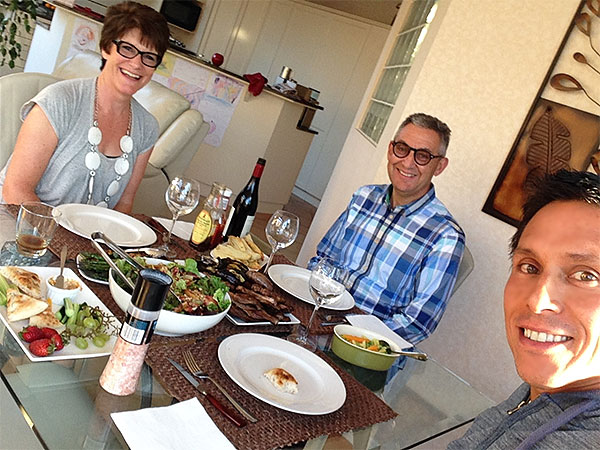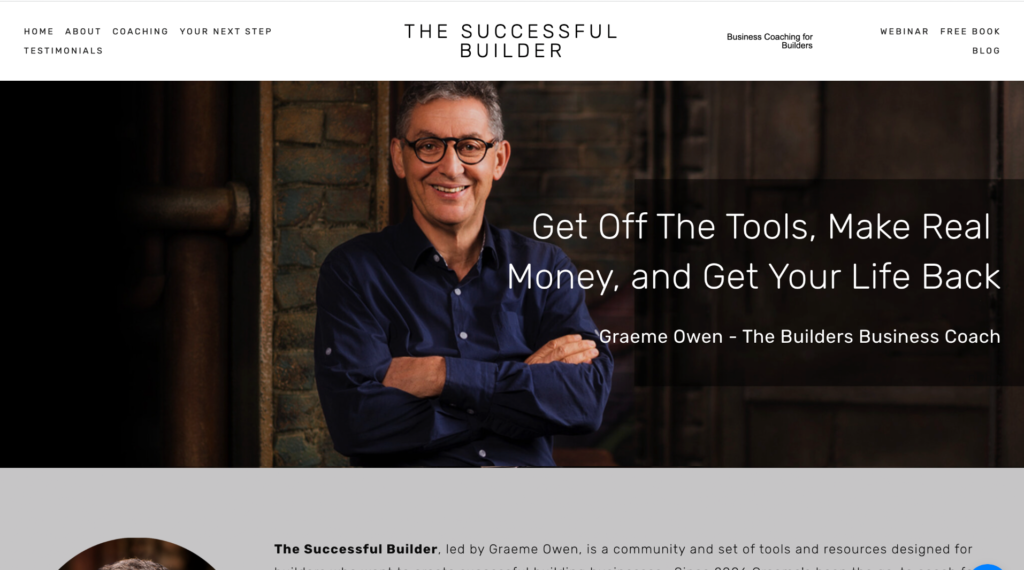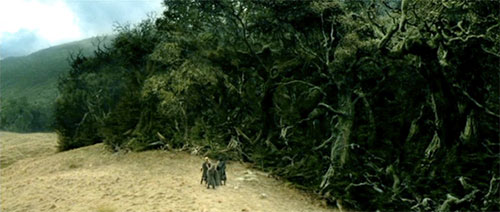Graeme Owen’s Success Story
A Website Case Study: Five Keys to Filling His Practice and Beyond

Update January 4th, 2023 – Happy New Year!
Though a decade later, this is my favorite story because (a) the strategy still works today, and (b) it was a great time for me.
~ Kenn
It was late in 2013 and I was due for another “work-ation” trip abroad.

If you want to be more classy, hang around classy people 😉
Graeme, a fun and productive guy, was perfectly situated to take his business to the next level. He had a handful of clients and wanted to up his marketing. We had recently launched his website, and it was time to build traffic.
The idea hit me to visit him, do some work together, and see the natural wonders in New Zealand. Afterall, The Lord of the Rings, and Avatar were filmed there, and I’m a total fantasy/adventure junkie.
So off I went. The one-month visit expanded into an incredible six-month adventure for me — and “heaps” of clients for him.
Below, we’ll look at 5 key pieces of his website that set him up for success.
Interestingly, just before this trip, I had completed The Coaching Website Guide, which outlines the website strategy I used with Graeme. You may want to nab a copy for yourself.
Key #1 – Crafting a compelling core message
After a long talk about his business, we identified that home-builders, renovators, and contractors were ideal kinds of clients for his business.
Steering him to think about his clients’ ultimate big benefits, we pulled together this phrase “Get off the tools, make real money, and get your life back!”
It was super tidy, so we used it as a tagline for his website. The header is shown here …

And just like the energizer bunny, a decade later, his message keeps going and going …

Can you see how this core message speaks to the client’s interests?
His target clients struggle to grow, often burning out at a low-profit, one-person operation. They truly want to earn much more, and not work every hour of the day.
For his overworked, low-earning builders, this little write-up works like magic.
Key #2 – Creating a must-have freebie
His freebie was focused on a key challenge his clients faced, earning and keeping money. Money tends to “leak” out of a builder’s business when they don’t watch the numbers.

With a little hunting, I was able to dig up a visual to fit. Can you see how the image above immediately, obviously, and directly works with the title and speaks to the pain?
A QUICK TIP ON FREEBIES: When I do blog posts, giveaways, or emails, I ALWAYS start with the title of the piece. This helps me stay focused on the target client’s interests. Also, creating the content is immensely easier, and more enjoyable. Whenever I try the opposite, writing first without a title, I get too much content that’s all over the place.
There are plenty of examples of creating freebies and all the content on your website to lead visitors to contact you in The Coaching Website Guide.
Key #3 – Building trust with his email list
We set up an email list and sent blog posts to educate his subscribers on succeeding as a builder. These positive interactions gained the trust of readers over time.

Having an email list is very powerful because YOU have full control over the content and timing of your messages, unlike other online platforms like say Facebook.
Facebook is particularly bad for staying in touch with people because it’s so noisy and distracting, especially with ads. And it evolves, so your control is weaker.
Email is simple, direct, and personal.
Key #4 – Writing a few expert blogs

We wrote blogs with lots of advice to showcase Graeme’s knowledge. Educating people helps build that high-level, expert image — like a teacher, a doctor, a smarty pants. 😉
Clients expect to pay good money for one-on-one help from a true professional.
As you can tell, I like creating content, especially for coaches. They always have great advice, smart ideas, and positive words to share.
So why not leverage that knowledge to build high credibility and attract clients?
It’s exactly what I do and it works well.
Key #5 – Sending out an enticing invite
After launching his website in 2012, we started building traffic by reaching out to local builder groups and posting articles to a construction magazine.
Over time, the visitor count and subscriber list grew.

To automate things more, we created pre-written emails to send out on a timed basis, that ended with a free session invitation. That last email contained …
- details about how the call would work
- benefits of having this special session
- a handful of questions to answer
Before finishing the system, we accidentally sent out that invite to his list. I was worried we promoted too soon, but since folks had been on his list for a while, they were primed for this.
Ge signed up five new clients right away, and in the following two months surpassed his goal of 10 clients. He couldn’t turn down the new leads because he loves helping people.
To handle the overload, he:
- revisited and increased his rates
- offered fortnightly coaching packages
- moved to Skype calls instead of in-person meetings
- hired another coach to help
He lit up like a Christmas tree when I asked him to retell me the story so I could share it with you. It was joyous.
IMPORTANT POINT: Most coaches hesitate to invite people to a free session — stating it feels pushy and awkward. But if your offer is “all about the client” then it’s not so forceful or selfish feeling — and instead, welcoming, natural, and generous.
Here’s his homepage
Here’s the homepage back in 2012 …

Here it is in 2023, a bit more modern looking …

I like the new photo, but I’d prefer to see more client-centered content before the user starts scrolling. Ultimately, your numbers will tell you what’s working.
Once he was off and running with plenty of clients, he took his website and marketing operations in-house.
Whew! We’ve covered a lot.
Now it’s time for hobbits!
We learned about the importance of a core message, making it all about the client, building trust, and more.
Now, let me share a few pics of my trip to New Zealand to find hobbits.
Kenn’s Unexpected Journey
If you’re an adventurous spirit like me, I’m sure you loved The Lord of the Rings books and movies.
Below is a scene from the movie that was shot in the Milford Sound, in the the South Island of New Zealand. It’s actually a fjord (an inlet with cliffs made from glaciers), but misnamed a sound (wider and without cliffs).



Below, I am installing wifi in the hobbit village.
A movie set tourists can walk around in.
It’s called Hobbiton.

Fangorn Forest is a place I want to see badly, but it’s off the beaten track. This is where the Ents (giant moving trees) lived.

In New Zealand, everywhere you go, you’ll be amazed by nature.
I recommend three to four weeks and renting a car or campervan to see it all. Half the fun is what you see when driving. New Zealand is about the size of California.
Is it time to further your learning about coaching websites? If so, check out The Coaching Website Guide.
